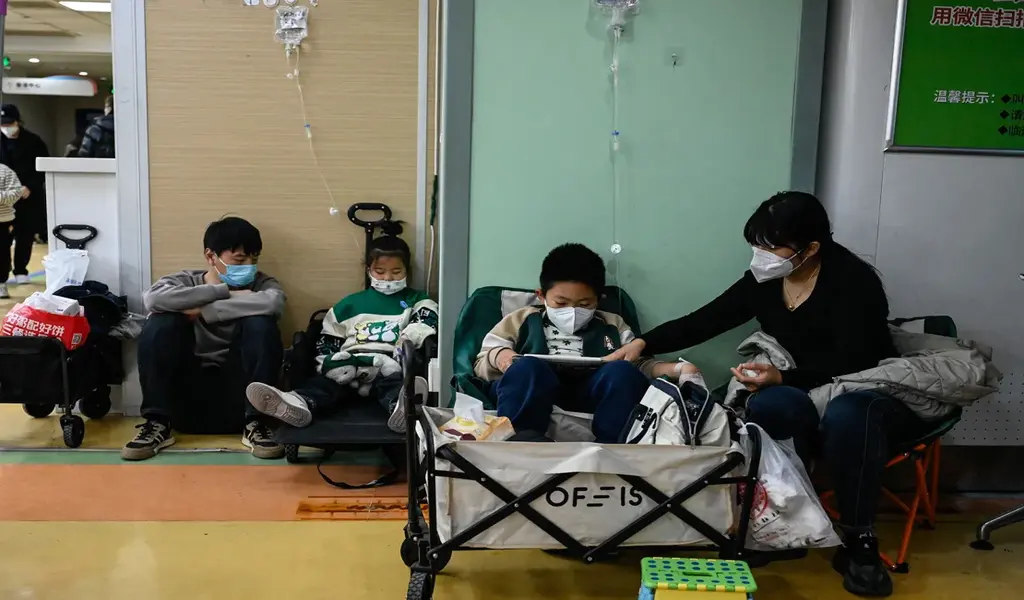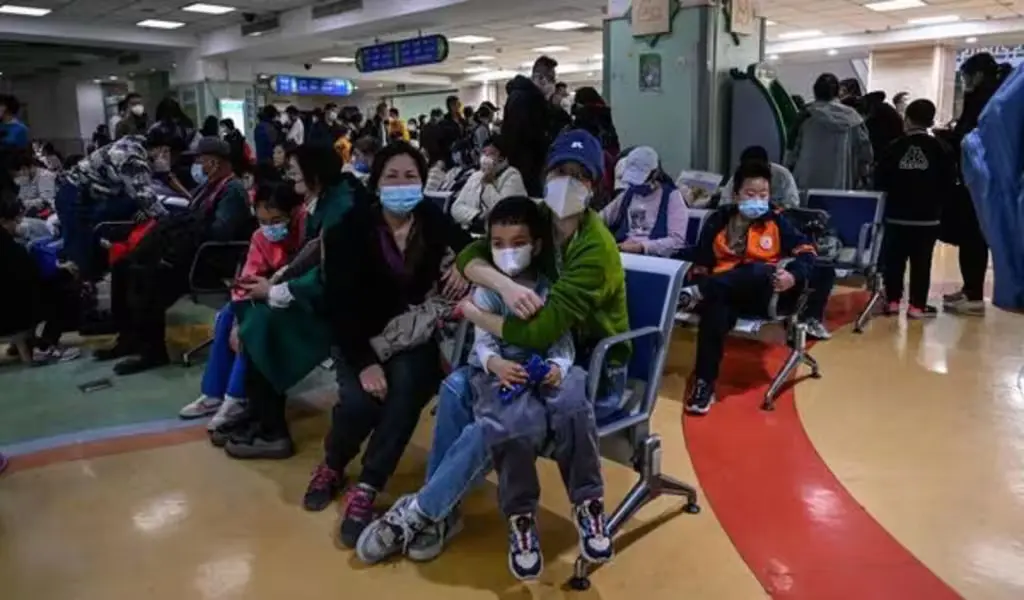(CTN News) – As the nation approaches its first winter after loosening strict COVID-19 rules over a year ago, hospitals in Beijing and northern China are trying to cope with an influx of children with respiratory problems.
Reports from CNN and Chinese state and social media indicate that hundreds of children in major cities across northern China are waiting in long lines to visit doctors, with wait times stretching into hours.
The present average of over 7,000 daily patients “far exceeds the hospital’s capacity,” according to an official at the Beijing Children’s Hospital who spoke to state media on Tuesday.
More than 13,000 youngsters visited the outpatient and emergency departments of the main pediatric hospital in neighboring Tianjin on Saturday, setting a new record, according to local state-run media.
A staff member informed CNN that seeing a pediatrician at the Beijing Friendship Hospital may take the entire day when the news organization called on Thursday to check about available appointment slots.
“At the moment, there are quite a few children here. According to the staff member, patients who scheduled an urgent appointment yesterday were still unable to see the doctor this morning.
Mycoplasma pneumonia, a bacterial infection that usually causes a mild infection and frequently affects children, and other common seasonal illnesses, such as influenza and respiratory syncytial virus (RSV), were cited as the main causes by health officials in Beijing and other northern Chinese major cities.
Seasonal respiratory infections are on the rise across the northern hemisphere, including the United States, where RSV is spreading at “unprecedented” levels among youngsters. This coincides with the surge in incidence across northern China.
On Wednesday, the World Health Organization (WHO) requested additional data from China regarding a rise in respiratory illnesses and “reported clusters of undiagnosed pneumonia in children,” referencing a post from the open-source surveillance system ProMED, which prompted widespread concern about the situation in China.
The World Health Organization (WHO) reported Thursday that it had met with Chinese healthcare and hospital officials and that data showed an uptick in pediatric outpatient consultations and hospital admissions for mycoplasma pneumonia in May, as well as for common seasonal infections like RSV, adenovirus, and influenza virus since October.
“Some of these increases are earlier in the season than historically experienced, but given the lifting of COVID-19 restrictions, as similarly experienced in other countries,” the World Health Organization put it.
Authorities in China reported “no detection of any unusual or novel pathogens or unusual clinical presentations,” the news agency stated, adding that
Similarly, outside scientists keeping tabs on the situation could not find any signs of a new virus, although they did urge China to be more transparent with the public regarding the situation.
According to Jin Dongyan, a virologist from the School of Biomedical Sciences at the University of Hong Kong, “We don’t think there is an unknown pathogen hidden somewhere,” as reported by CNN. “I don’t see any proof of that.”
Whether the recent uptick in cases of pediatric pneumonia heralds the emergence of a novel pathogen or the escalation of illness severity is the primary cause for alarm, according to epidemiologist Catherine Bennett of Australia’s Deakin University.
Bennett stated, “So far we have not heard reports of either,” emphasizing the importance of closely monitoring infection sources to address any potential risks.
There has been an uptick in social media complaints from Chinese parents in the past few weeks on the overcrowding in hospitals, specifically regarding the long wait times for children to see a doctor and even longer wait times for blood tests and intravenous drips.
People in China usually visit hospitals or emergency rooms first when they are sick because the country’s primary care system is not very well-developed. Those places can get really packed during the busiest times of the year.
A picture of a hospital screen informing patients that there was a line of more than 700 people and that they may expect to wait 13 hours went viral on the Chinese social media site Weibo.
Online footage from a Beijing pediatric hospital connected to the Capital Institute of Pediatrics showed overcrowded hallways, parents lining the aisles on folding stools and some toddlers with intravenous drips sitting on their laps.
On multiple occasions, hospital and national health authorities in China have cautioned parents against taking their children to huge pediatric hospitals for diagnosis, instead recommending that they visit primary care or general services clinics.
In a Thursday warning, the National Health Commission (NHC) directed parents to alternative triage facilities due to concerns about “long wait times and a high risk of cross-infection” at large hospitals.
According to the NHC’s statement, it has ordered “all localities” to improve their case management and treatment procedures, which includes finding the most serious cases among the new patients.
A doctor advised parents not to request intravenous fluids “as soon as a child has a fever,” according to a Beijing municipal government republishing an article from state media.
On Thursday, the World Health Organization stated that according to Chinese authorities, “the rise in respiratory illness has not resulted in patient loads exceeding hospital capacities.”
The first full winter without China’s “zero-Covid” restrictions, during which people wore face masks and maintained tight social distance, coincides with the spike in hospital visits.
Unprecedented demonstrations broke out last December in opposition to pandemic measures, including tight lockdowns, prompting an abrupt easing of the controls.
Due to China’s inadequate public data, it is difficult to determine if the number of children suffering from respiratory infections or severe instances has increased compared to the years before the epidemic.
The virologist Jin from Hong Kong University explained that during the zero-Covid era, the prevalence of common respiratory infections was likely underestimated since people shied away from hospitals and everyone engaged in social isolation.
A significant increase from last year to this year is completely expected. It remains to be seen, though, whether it’s a significant increase over 2018 and 2019.
Jin further that social issues may be at play here since, in the wake of the pandemic, parents may be more worried about their children’s health and hence more likely to seek medical attention.
Since the coronavirus pandemic emerged in late 2019, illness outbreaks have received more attention. China is among those demanding greater openness; it is under scrutiny for allegedly obstructing investigations into the virus’s origins and hiding early data on its spread.
An increase in viral respiratory tract infections in children around the start of winter is not surprising, according to Christine Jenkins, a professor of respiratory medicine at UNSW Sydney. This trend has been documented for decades around the world.
“However, it is absolutely essential to report and monitor cases promptly in light of the current pandemic involving a relatively new virus like the novel coronavirus and the possibility of other new viruses or mutations causing respiratory tract illness,” she said.







